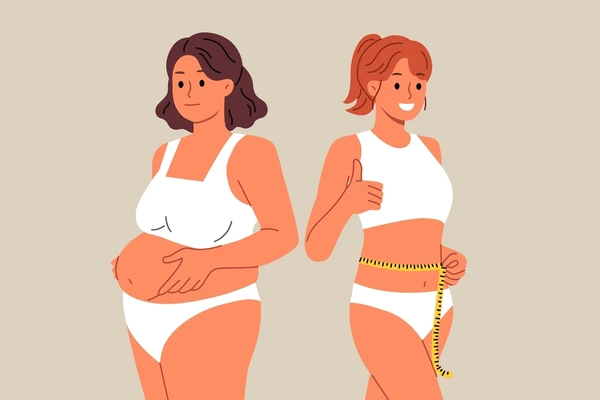Losing weight can feel like a daunting journey, especially with all the advice floating around. One minute, you’re hearing about the latest trendy diet, and the next, you’re bombarded with workout routines that promise to melt fat away. It’s easy to get overwhelmed, but the truth is that losing weight doesn’t have to be as complicated as it seems. In fact, with the right approach, small, sustainable changes can lead to big results. Whether you’re just starting or looking for a refresh on your routine, this guide is all about giving you practical, realistic tips to help you shed those extra pounds while staying healthy and feeling good in the process. Let’s dive into how you can start making lasting progress, step by step!
1. Understanding Weight Loss Basics

When it comes to losing weight, it all starts with understanding the basics. You might hear all sorts of terms thrown around, but at the core, weight loss is pretty simple: it is about creating a calorie deficit. This means you need to burn more calories than you’re consuming. But don’t worry, we’ll break it down so it’s easy to grasp.
The Science of Calorie Deficit
Every food and drink you consume has a certain number of calories, which provide your body with energy. Your body also uses energy to do everything—from breathing to running to digesting food. When you consume more calories than your body needs, the extra energy gets stored as fat. On the flip side, if you consistently burn more calories than you consume, your body will use stored fat for energy, leading to weight loss.
How Metabolism Impacts Weight Loss
Metabolism is the process by which your body converts what you eat and drink into energy. This process occurs continuously, even while you’re sleeping! Your metabolism’s speed can vary from person to person and is influenced by things like age, gender, genetics, and even muscle mass. The higher your metabolism, the more calories you burn at rest.
People often wonder, “Is it my slow metabolism that’s making it hard to lose weight?” While metabolism can play a role, it’s only one piece of the puzzle. In fact, you have more control over your weight loss through diet and exercise than you might think.
For example, building muscle can actually help speed up your metabolism because muscle tissue burns more calories than fat tissue, even when you’re not exercising. So, don’t just focus on cardio—strength training is key to boosting your metabolism and helping you lose weight.
2. Setting Realistic Goals
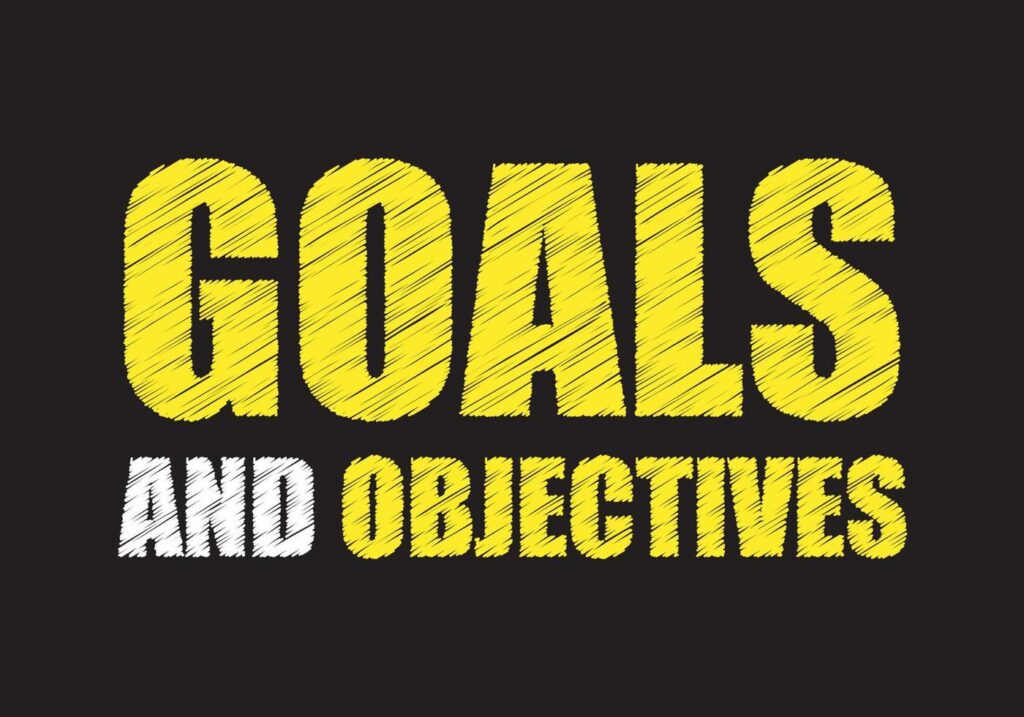
When you first start thinking about losing weight, one of the first things that can really set the tone for your journey is setting realistic goals. It’s easy to get caught up in the excitement of wanting quick results, but it’s important to remember that sustainable weight loss is a marathon, not a sprint. If you set yourself up for unrealistic expectations, it can lead to frustration and disappointment when things don’t go as planned.
How to Set Achievable Weight Loss Targets
So, how do you set goals that are both motivating and achievable? First, it’s helpful to focus on specific, measurable, and realistic targets. Instead of saying, “I want to lose weight,” try narrowing it down to something more concrete, like “I want to lose 1-2 pounds per week.” This target is based on a safe and sustainable rate of weight loss.
Losing 1-2 pounds a week may not sound like a lot, but over time, it really adds up. In a month, that’s 4-8 pounds, and over several months, it could mean a significant transformation! The goal here is to set a pace that you can maintain over the long haul, not just a few weeks.
You also want to think about setting both short-term and long-term goals. Short-term goals might include things like working out 3 times a week or eating more vegetables with your meals. Long-term goals could be things like reaching a specific weight or fitting into a favorite pair of jeans. Breaking down your journey into smaller, achievable steps will help you feel more motivated and less overwhelmed.
Tracking Your Progress Effectively
Tracking your progress can really help you stay on course and celebrate your wins, big and small. But when it comes to weight loss, it’s important to remember that the number on the scale is just one part of the picture. Weight fluctuates for many reasons (like water retention, muscle gain, or hormonal changes), so don’t get discouraged if the scale isn’t moving exactly how you’d like it to.
Be Flexible and Patient with Yourself
It’s also crucial to remember that life doesn’t always go as planned, and you’ll likely encounter challenges along the way. Maybe you missed a workout or indulged in a treat you hadn’t planned for. That’s okay! Weight loss is about progress, not perfection. Don’t be too hard on yourself if things don’t go exactly according to your plan. The key is to stay flexible and get back on track when life throws a curveball.
3. Healthy Eating Habits for Weight Loss
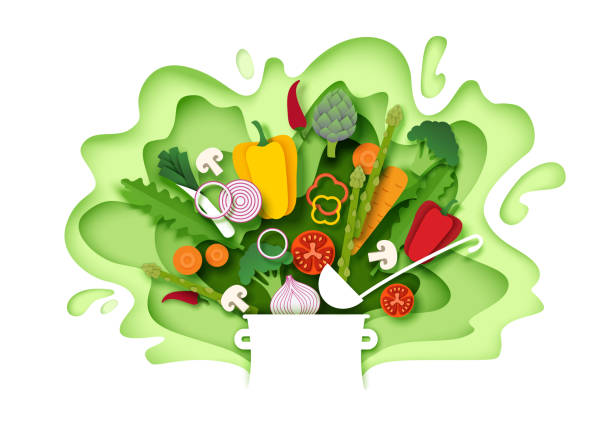
When it comes to losing weight, what you eat plays a huge role. But here’s the good news: healthy eating doesn’t mean depriving yourself or sticking to a super strict diet that feels impossible to maintain. In fact, adopting a few simple healthy eating habits can make a big difference, and the best part is, they’ll help you not just lose weight but feel better overall!
Importance of Balanced Nutrition
Let’s start with the basics: balanced nutrition. Your body needs a variety of nutrients to function at its best, so focusing on just cutting calories isn’t the best approach. Instead, aim to eat a mix of macronutrients (carbs, protein, and fat) to fuel your body properly.
- Carbohydrates: Your body’s primary source of energy, carbs are important for fueling workouts and daily activities. The key is choosing complex carbs like whole grains (brown rice, quinoa, oats), vegetables, and fruits, which provide fiber and nutrients to keep you full longer.
- Protein: Protein is crucial for repairing muscles and keeping your metabolism running strong. It also helps curb hunger and keeps you satisfied. Good sources of protein include lean meats (chicken, turkey), fish, eggs, beans, and tofu.
- Healthy Fats: Don’t shy away from fats! Healthy fats from sources like avocados, nuts, seeds, and olive oil are essential for hormone regulation, brain function, and keeping you full and satisfied between meals.
By including a mix of these in each meal, you’ll not only be nourishing your body but also setting yourself up for successful weight loss by keeping cravings at bay.
4. Exercise and Physical Activity
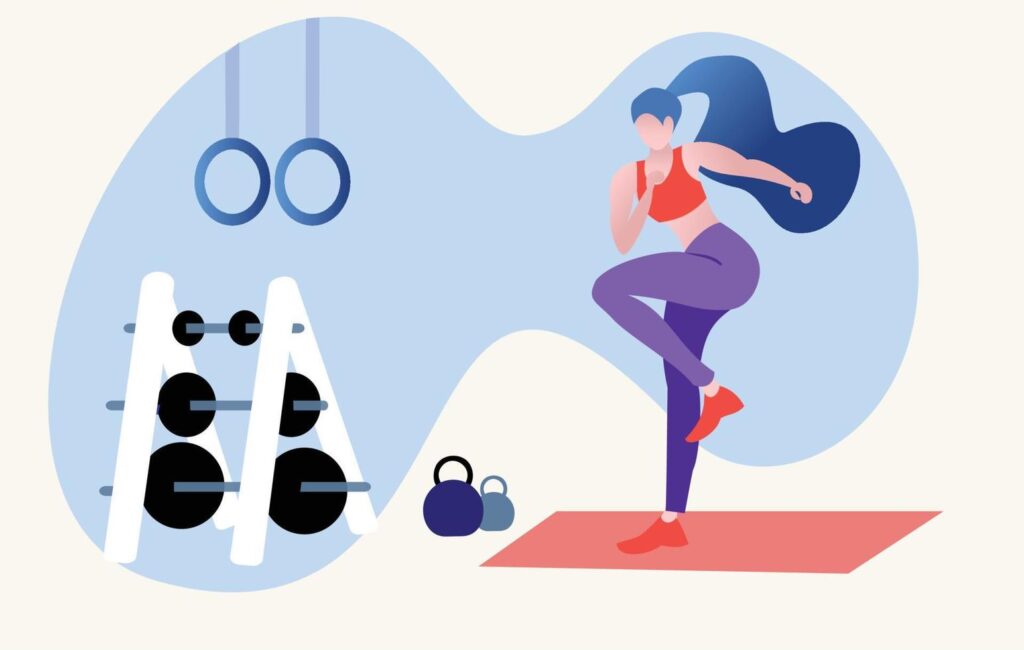
Exercise is often the cherry on top of your healthy eating habits. Sure, diet plays a huge role in weight loss, but being physically active has its own set of benefits that can help speed up the process. Exercise doesn’t have to mean grueling hours at the gym or high-intensity workouts every day. It’s about finding activities that you enjoy and can realistically fit into your routine.
Let’s dive into the different types of exercise that can help with weight loss and how you can get started.
The Role of Cardio in Burning Fat
Cardiovascular exercise, or cardio, is any activity that gets your heart rate up and makes you breathe a little heavier. It’s one of the best ways to burn calories, making it a key player in weight loss. Activities like running, walking, cycling, swimming, or even dancing count as cardio.
You don’t need to spend hours on the treadmill to see results. In fact, studies show that moderate cardio done 3-5 times a week for about 30 minutes can make a huge difference in burning fat and improving your heart health. If you’re short on time, high-intensity interval training (HIIT) is a great option. HIIT involves short bursts of intense exercise followed by brief rest periods, and it can burn a lot of calories in a short amount of time.
Strength Training and Muscle Building for Weight Loss
Now, while cardio is great for burning calories, strength training (or resistance training) plays an equally important role in weight loss, especially if you want to increase your muscle mass. Muscle burns more calories at rest than fat does, meaning the more muscle you have, the more calories you’ll burn even when you’re not exercising.
Strength training involves using weights, resistance bands, or your body weight to challenge your muscles. This could include exercises like squats, lunges, push-ups, or lifting dumbbells. If you’re new to strength training, don’t worry—it doesn’t mean you need to become a bodybuilder. Start with lighter weights or bodyweight exercises and gradually increase the resistance as your strength improves.
5. Sleep and Its Effect on Weight Loss

It might sound a little surprising, but one of the most important aspects of weight loss often gets overlooked: sleep. While it’s easy to focus on diet and exercise, if you’re not getting enough quality sleep, your weight loss efforts could be seriously hindered. Sleep doesn’t just help you feel rested and recharged—it plays a crucial role in regulating the hormones that control hunger, metabolism, and fat storage.
Let’s take a closer look at how sleep impacts weight loss and why getting enough rest is so important.
Why Quality Sleep is Crucial for Weight Management
When you sleep, your body isn’t just “resting”—it’s also working hard to repair and restore itself. This includes regulating hormones like ghrelin (the hunger hormone) and leptin (the fullness hormone). When you don’t get enough sleep, your ghrelin levels rise, which means you’re more likely to feel hungrier. At the same time, your leptin levels drop, meaning you’re less likely to feel satisfied after eating. This one-two punch can lead to overeating, cravings, and poor food choices.
Not only that, but sleep also affects your body’s ability to burn fat. When you’re well-rested, your body is better equipped to process carbohydrates and use fat as fuel. Lack of sleep can interfere with your body’s ability to metabolize food effectively, potentially leading to weight gain or difficulty losing weight.
If you’re not getting enough sleep, your stress levels may also rise. When you’re sleep-deprived, your body produces more cortisol, the stress hormone. Elevated cortisol levels can trigger cravings for high-calorie, sugary foods as your body tries to cope with the stress. This means you might find yourself reaching for comfort food or snacking late at night, which can easily derail your weight loss efforts.
6. Hydration and Its Role in Weight Loss
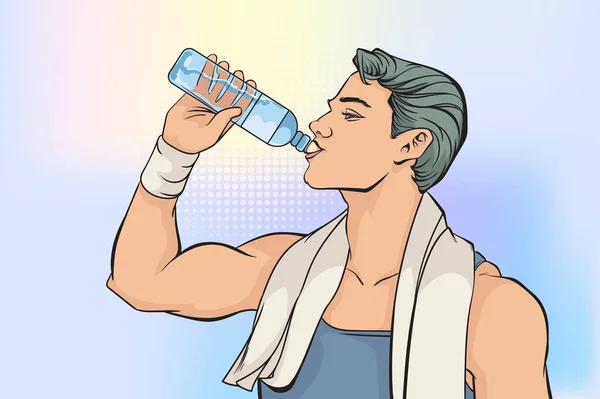
When it comes to weight loss, we often focus on food and exercise, but there’s one crucial factor that tends to get overlooked: hydration. Drinking enough water can play a huge role in your ability to lose weight, and it’s so simple! Not only does staying hydrated help your body run efficiently, but it also supports fat burning, keeps you feeling full, and can boost your metabolism. Let’s dive into why hydration matters and how it can make a big difference in your weight loss journey.
How Drinking Water Can Boost Your Metabolism
Your metabolism is essentially the process by which your body turns food and drink into energy. When you’re properly hydrated, your body functions more efficiently, including its ability to burn calories. Studies have shown that drinking cold water can actually temporarily boost your metabolism. This is because your body has to work harder to warm the water up to body temperature, which means you’re burning more calories in the process.
Some research also suggests that drinking water before meals can help increase your calorie burn. In fact, drinking about 500 ml (17 oz) of water can increase your metabolic rate by up to 30% for about 30-40 minutes after consumption. So, if you’re looking to give your metabolism a little boost, drinking water regularly throughout the day can help.
The Benefits of Herbal Teas and Water-Rich Foods
Water isn’t the only way to stay hydrated, though! You can also incorporate herbal teas into your daily routine. Teas like green tea, peppermint, or chamomile can be both hydrating and soothing. Green tea, in particular, has been linked to fat loss, thanks to compounds called catechins, which may help increase fat oxidation. Plus, warm beverages can have a calming effect, which can reduce stress-related eating.
Another way to stay hydrated is by eating water-rich foods. Many fruits and vegetables have a high water content and can help keep you hydrated while also providing essential vitamins and minerals. Examples include:
- Cucumbers
- Watermelon
- Celery
- Strawberries
- Oranges
Incorporating these hydrating foods into your meals and snacks is a great way to support your weight loss goals while also nourishing your body.
How Much Water Should You Drink?
So, how much water should you actually be drinking to stay properly hydrated? While there’s no one-size-fits-all answer, a general guideline is to aim for 8 cups (64 oz) of water a day. However, this can vary based on factors like your activity level, climate, and individual needs. If you’re exercising or spending time in hot weather, you’ll need to drink more to replace the fluids lost through sweat.
A good way to check if you’re hydrated is to monitor the color of your urine. If it’s light yellow or clear, you’re doing great! Darker urine can be a sign that you need more water. Just remember, you don’t need to go overboard—too much water can lead to a condition called hyponatremia, where your sodium levels become dangerously diluted. So, drink consistently throughout the day, but don’t feel the need to chug a ton of water all at once.
Avoiding Common Weight Loss Mistakes
When you’re on your weight loss journey, it’s easy to make mistakes, especially with all the conflicting advice out there. While it’s great to be motivated and ready to make changes, sometimes we can fall into traps that actually slow down our progress. But don’t worry! The good news is that with a little awareness, these mistakes can be avoided. Let’s go over some of the most common missteps people make when trying to lose weight and how to steer clear of them.
1. Skipping Meals or Drastically Cutting Calories
One of the biggest mistakes is thinking that skipping meals or cutting calories drastically will speed up weight loss. Sure, it might seem logical to cut back as much as possible, but this actually slows down your metabolism in the long run. When you don’t eat enough, your body goes into “starvation mode” and holds on to fat to protect itself. Plus, skipping meals can lead to binge eating later because you’re just too hungry to resist.
Instead of cutting calories too drastically, try eating smaller, balanced meals throughout the day. Include protein, fiber, and healthy fats to help keep you full and satisfied. This will give your metabolism a steady supply of fuel and prevent overeating later.
2. Relying Too Much on “Diet” Foods
It’s easy to fall for the marketing hype around “diet” or “low-fat” foods. Many of these products are loaded with sugar or artificial ingredients to make them taste better, and they may not be as healthy as they seem. For example, low-fat snacks often replace fat with added sugar or refined carbs, which can still sabotage your weight loss.
Instead of focusing on processed diet foods, aim to eat whole, nutrient-dense foods like fruits, vegetables, lean proteins, whole grains, and healthy fats. These foods provide more lasting energy and will nourish your body, which is far more effective for long-term weight loss.
3. Overestimating Exercise and Underestimating Diet
Exercise is important, but it’s not a “get out of jail free” card for eating whatever you want. A common mistake people make is thinking that because they worked out, they can splurge on unhealthy foods. In reality, it’s much easier to consume extra calories than to burn them off through exercise. For example, a 30-minute jog might burn around 300 calories, but it’s easy to eat that much in a snack or a sugary drink.
Remember, weight loss is about 80% diet and 20% exercise. Exercise is essential for building muscle, increasing metabolism, and improving health, but diet plays a much bigger role in losing weight. A balanced, nutritious diet will make your exercise efforts more effective, helping you see better results.
4. Expecting Quick Results
If you’re expecting quick results, you’re setting yourself up for frustration. Weight loss takes time, and it’s normal for the scale to fluctuate or for progress to be slower than you’d like. Some weeks you might lose more weight, and other weeks, it may seem like nothing is happening. This can be discouraging, but it’s important to remember that slow and steady wins the race.
Weight loss isn’t just about how fast you can shed pounds—it’s about making long-term changes that you can maintain. Focus on building sustainable habits, and remember that every step forward, no matter how small, is progress. Celebrate the little victories and trust the process.
5. Getting Too Fixated on the Scale
The scale can be a tricky thing. It’s easy to let the number on the scale define your progress, but the truth is, it doesn’t tell the whole story. You could be losing fat and gaining muscle at the same time, which may not result in a dramatic change on the scale, but you’ll notice it in how your clothes fit, your energy levels, and your overall health.
Instead of obsessing over the number on the scale, pay attention to other non-scale victories, like improved fitness, better sleep, and increased strength. These are all signs that your body is becoming healthier and stronger, even if the scale doesn’t reflect it right away.
6. Not Getting Enough Sleep
We’ve talked about how important sleep is for weight loss, and it can’t be overstated. Many people focus solely on diet and exercise, but if you’re not getting enough sleep, it can seriously hinder your progress. Lack of sleep messes with your hormones, increases hunger cravings, and decreases your ability to make good food choices.
Aim for 7-9 hours of quality sleep each night to support your weight loss goals. Prioritize sleep as part of your overall wellness routine, and you’ll likely see better results both in terms of weight loss and your overall health.

